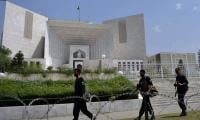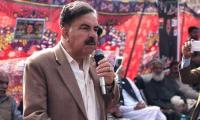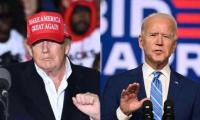In all chaos there is a cosmos, in all disorder a secret order. — Carl Jung
On August 30, India reports 78,761 new coronavirus cases, the biggest daily figure anywhere in the world since the pandemic began. It also reports 1021 deaths. Pakistan, on the same day, reports 319 new coronavirus cases and one death.
The world has turned upside down since early 2020 because of the coronavirus and yet it remains difficult for scientists, policymakers, and leaders to understand why some countries are suffering more than others.
I arrived in Islamabad from New York during mid-June and witnessed Pakistan’s post Eid-ul-Fitr spike which reached the highest number of cases, nearly 7000, in a single day. Having personally experienced the Covid-19 cataclysmic spread in the US and its accompanying devastation to lives and livelihoods, I braced myself for greater carnage in Pakistan.
Looking at the data with logic and rationale alone does not tell the whole story. Pakistan has a densely packed population of 220 million with a fraction of the healthcare budget and health infrastructure of the US. Rural Pakistan represents 63% of the population and has one doctor for nearly 2000 patients. There are 1,400 ventilators for the entire population, one hospital bed for nearly 2,000 people. The cities are slightly better equipped, but only just.
So how is it possible that a wealthy and technologically advanced nation like the US cannot control the virus spread, but Pakistan has thus far.
To solve this mystery, I met Dr. Faisal Sultan. Dr. Sultan is Prime Minister Imran Khan’s Special Assistant and Focal Person on Covid-19.
Full disclosure: Dr. Faisal and I have graduated from the same Alma Mater — KEMU. Dr. Faisal went on to study in the US in 1989 and did his American board qualification in internal medicine. He specialized in infectious diseases from the University of Connecticut and Washington University School of Medicine in St Louis. After coming back from the US, he joined SKMT as CEO.
Early this year in March, PM Khan, sensed that he required an infectious disease expert on his crisis health team fighting coronavirus. Dr. Faisal immediately relinquished his role as CEO, left his family in Lahore, and came to Islamabad to help in the effort to save Pakistan from the ravages of a deadly virus. A virus which eminent epidemiologists like Dr. Larry Brilliant (TED Prize winner, Senior Technical Advisor for the pandemic horror film Contagion) have described as “the most dangerous in more than one hundred years, perhaps much more.” Dr. Larry Brilliant, who helped eradicate smallpox, wrote to me in an email: “No model or comparison takes into the consideration the financial, moral, psychological or human experience of such lethal speed. Catastrophic epidemics of smallpox (when no one was vaccinated), cholera (when unsafe faecal contamination ran wild) or Ebola (pre-vaccination) come to mind as comparable, not influenza, not swine flu, not 1918.” Dr. Sultan, like Dr. Brilliant, is a no nonsense scientist, but also a man of deep faith.
Dr. Sultan says that PM Imran Khan laid out the mission at the outset: “I want to protect Pakistani lives from the coronavirus but I also don’t want the poor and vulnerable to suffer economic hardships.”
The PM’s clarity of vision set the tone for the entire national crisis management effort. This was a nation united at war against an invisible enemy.
The NCC, NCOC, led by Federal Minister Asad Omar, the NDMA (led by Lt Gen Afzal), federal and provincial leaderships, private labs and hospitals, senior media anchors and networks, the Telcos, MNCs, opinion makers, and celebrities all helped to amplify the SOPs. Dr. Sultan stated that there were more people wearing masks, more tests, and more physical distancing.
It was a roller coaster ride. An Imperial College London study made a projection from a simulation model, which forecast the grim picture of close to 80,000 deaths on August 10. Thankfully, that has not happened despite the large gatherings of Eid-ul-Azha, Independence Day celebrations, and more recently, Muharram.
With no playbook to follow, and seemingly no way out, Dr. Sultan and the PM’s national team came up with a novel strategy for a novel virus:
A) Micro & Smart Lockdowns
B) Using the polio surveillance infrastructure to identify hotspots, contact tracing, & quarantining the infected.
C) Benefiting from the youthful demographics of Pakistan. The average age is 22, perhaps a vast majority of whom may have been infected & recovered asymptomatically, to set up a firewall of immunity.
D) The heat & the humidity may have slowed down the transmission of the virus like the summer months have done for poliovirus.
E) Holistic treatments and local diets.
The Chinese word for crisis embodies both danger and opportunity. There have been multiple crises in the subcontinent — dark clouds of Covid19, climate crisis (the recent devastating Karachi rains), and intractable political conflicts (turmoil in IOK Kashmir). As bleak as things may appear between the two neighbours, I still see some light in the areas of health and environment.
Dr. Sultan mentioned that it's the PM's vision to build a one disease surveillance network. When I pointed out transnational codependencies and that epidemics do not recognize borders nor politics, Dr Sultan said that for humanitarian reasons, "Pakistan is willing and happy to share Covid19 data and best practices with its neighbours, and the rest of the world.”
Considering the fact that India is still struggling with Covid19 (https://www. nytimes.com/2020/08/28/world/asia/india-coronavirus.html), is it worth exploring a dialogue on mutual cooperation in public health?
Improving health infrastructure and preserving the environment are two of Prime Minister Imran Khan’s key policy goals along with accountability and peace. Can the two nuclear-armed neighbours use the opportunity provided by a dangerous pandemic and a climate crisis to begin a dialogue on peace and justice?
This image shows the Commission on Science and Technology for Sustainable Development in the South building in...
This representational image shows a teacher taking a class. — AFP/FileIslamabad:In a ground breaking move, the...
This image shows the logo of the Women’s Action Forum . — Facebook/Women's Action Forum, Islamabad/FileIslamabad:...
Aziz Boolani, CEO of Serena Hotels cut a ribbon along with Islamabad Foreign Women’s Association officials during...
Participants pose for a group photo at a ceremony on May 2, 2024. — Radio PakistanIslamabad:Dr. Akbar Niazi Teaching...
Women boarding the Pink Bus after the inauguration ceremony in Karachi on February 1, 2023. — OnlineIslamabad: The...







